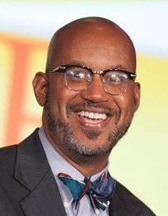In this three-part series, guest blogger David Anderson Hooker follows up on his earlier post, “Where will we find justice for Trayvon Martin?”
Trayvon Martin. George Zimmerman. Dead. Alive. Dead! Not responsible. Like the President. Like Emmett Till. Like every other child that has been murdered senselessly by gun violence. It was reasonable to be afraid. Stand Your Ground. Negrophobia and other reasonable racisms. Nothing has changed. The President’s speech was a game changer.
In many ways this is such a fast moving story that it is hard to know when or where to jump into the conversation. And yet this is a slow moving conversation that hasn’t changed tremendously since the days of Emmett Till, James Chaney, Micki Schwerner, and Andy Goodman. So many similarities: boys trying to do the right thing – or at least minding their very own business – get killed senselessly and the criminal adjudication system (fully distinguishable from a “justice” system) does not hold anyone accountable. Some people are outraged while others think the situation is overblown.
Although it seems that little has changed, there are some substantial differences between the Martin case and the others:
- Most significantly, in 2013 the President of the United States doesn’t have to offer his sympathy; he can actually empathize with the family and all those anguished by the outcome of the trial. The President’s press conference, in which he directly identified with “the Trayvons of the world,” seemed to provide a great catharsis for many.
- Another African American man is the Attorney General of the United States. The full force of the United States Attorney’s office is under the direction of another person who anguished over the death, the handling of the trial, and the outcome.
- In 2013, we have instant coverage and international empathy and outrage. I was gratified to be asked to offer commentary on radio stations in Toronto, Vancouver, Nassau, and Port of Spain (capitol city of Trinidad y Tobago). This says to me that this situation could possibly galvanize international solidarity among marginalized peoples. (And possibly the marginalized people in the United States will see that we are just one among many marginalized populations seeking human, not civil, rights.)
Finally, a major difference was the number of youth and young adults across the racial, ethnic and income spectrum who identified with the case and were anguished. They said “We don’t matter.” There was a collective sense of hurt and disappointment that bodes well for the future.
So let’s admit that some things are very different. Yet we are left with a nagging suspicion that, while in its style the governmental response might be quite different, in substance there is likely to be little change. So this is a fast moving news story about a slow moving life story. But there are things that we can do to make a difference. I am hopeful that the current disappointment that many are experiencing might present an opening for people of good will to identify with a different approach.
In the next blog entry I will explore this further.

